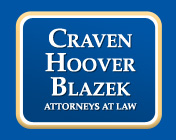There are so many terms in regards to tort law that it can be confusing understanding what a simple sentence means in a legal or court document. Personal injury lawyers are the solution to comprehending confusing legal jargon and paperwork in the case that you are filing a claim against a negligent party. Some terms, like “negligence” and “liability” can be self-explanatory; but other terms, like “nonfeasance” can be quite the opposite. Continue reading to learn the meaning of the term nonfeasance, and examples of such cases.

Personal Injury Law Firm 317-881-2700
Intentional Failure to Act
Nonfeasance is a legal term used in tort law that describes an inaction, rather than an action. Nonfeasance is the act of intentionally neglecting to carry out a mandatory duty or obligation, and as a result of that neglect, someone is harmed or killed. Someone can be guilty of nonfeasance if and when a duty of care is owed to a person or group of people, a breach of that duty takes place, and that breach resulted in injury to that person or people.
Courts believe that people, even if they are not creating a dangerous situation, must still take proper action to prevent harm or danger to others. In most cases, this liability is for those with preexisting relationships only. For example, if an onlooker observes a stranger drowning, they cannot be held liable for harm or death to the stranger if they have no pre-existing relationship with them. On the other hand, if the onlooker and victim are not strangers to one another, there is a legal duty of care to help. In contrast, if the bystander is someone with a legal duty of care to help or protect, like teachers or lifeguards, then they CAN be held accountable for a victim’s drowning or injury if they neglect to take proper action to prevent harm.
Relationships that obligate a duty to act in terms of nonfeasance include spouses, family members, school and students, babysitter and child, employer and employees, jails and jailers, medical establishments and patients, driver and passenger, parents and children, lifeguards, EMTs, firefighters, law enforcement, and much more. Courts have also found a “duty to act” in cases where a person provides help for someone injured or in danger, but that help leaves the victim in worse condition because their actions were unreasonable, also referred to as misfeasance (performing poorly). For example: a person sees a car accident and stops to help the victim. They pull the unconscious victim from the vehicle and carries them to the side of the road. All of these actions turn out to be more harmful because the victim had serious neck and spinal injuries that called for special maneuvering and transportation by trained EMTs. By moving the victim themselves and hesitating to call 911, they put the victim in further danger. This means they can be held liable for nonfeasance, or failing to take the proper actions to prevent harm to another.
If you believe you or someone you love has been a recent victim of similar negligence, contact a licensed personal injury lawyer to learn your rights.

